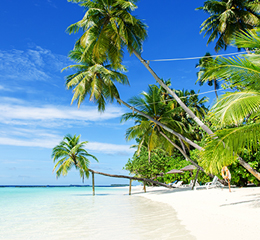Select a region (Please consider current travel restrictions)
Portugal

Destination overview
Portugal has been independent since 1143 and its borders have remained unchanged for centuries. But it’s the sea that has played a large part in its history. Situated in the far west corner of Europe and with a long coastline, Portugal has always felt an urge to venture across the seas and the Portuguese were the first Europeans to arrive in India, Brazil and Japan. These times are recorded in the Manueline style of some of Portugal’s most distinctive monuments.
When visiting this historical place, make sure you pay a visit to the monasteries of Batalha and Tomar or take a look at the famous window at the Convento de Cristo to see images of Portugal’s relationship with the sea engraved in stone. That relationship still continues today and the Parque das Nações, the site of the last World Exposition of the 20th century, is dedicated to that very theme. There are some fine examples of contemporary Portuguese architecture to be found here, most notably the buildings designed by Álvaro Siza Vieira and Souto Moura.
Once one of the great seafaring nations, Portugal’s many World Heritage sites reflect its ancient roots. Perched as it is on the far west of the European landmass, it also had many magnificent beaches. The distances are small in Portugal and you can get almost everywhere easily and efficiently by train, bus or ferry. The Estoril Coast, just near Lisbon, is famous for its calm waters and never-ending stretches of golden sands. Mild winters and perfect summers make it the ideal place to holiday all year-round. And, if you ever get tired of lazing in the sun, there is no shortage of wonderful places to go.
If it’s a casino you’re after, the Estoril Casino is the largest in Europe. On a more sedate note, the Parish Church in Cascais is a stunning specimen of Portuguese art. The Castro Guimarães Palace is a treasure trove, and don’t miss Sintra’s romantic palaces and gardens.
Situated on the extreme South of Portugal, The Algarve was the last part of the territory to be conquered from the Moors by the Portuguese King in 1292. Traces of the Moorish presence are still seen in its unique architecture - terraces, chimneys and white-washed houses. Old castles stand protectively on the heights and the colourful fishing boats of Albufeira are decorated with eyes, animals and stars. Think of The Algarve and you think of sunshine and relaxing holidays on golden beaches in calm sea waters, sampling the delights that this wonderful region of Portugal has to offer. West Algarve is Europe's sunniest spot, where some of the finest beaches and weather on the continent meet traditional historic Portugal.
If you fancy an action-packed holiday, The Algarve caters for all holiday-makers with every water sport imaginable, but by venturing just a few miles inland, you can also lose yourself in the heritage and history of The Algarve. In the northern part of this area, the hills of Espinhacao de Cao, Monchique and Caldeirao shelter the coast from strong winds. Filled with groves of fig, orange and almond trees in the interior, the endless expanse of dusty gold beaches are broken up by extraordinary rugged cliffs and fantastic grottos. Castro Marim’s Salt Marsh Natural Reserve is a haven for a multitude of flora and fauna, including the flamingo. And Portimao is the place to shop for authentic national crafts.
The provincial capital of The Algarve, Faro is a thriving university town. While not a resort town, here you’ll find a maze of twisting lanes and ancient buildings. The marina is well worth a visit and the ancient town of Estoi is home to a splendid Palace. Best of all is the old walled town with its quiet, cobbled streets and its 16th, 17th and 18th century buildings. Here you will find the Manuel Bivar gardens, at the enclosed end of which stands the imposing Vila do Arco. Go through the archway and you are immediately in the old quarter where you’ll find a wonderland of antiquities.
The most lavishly adorned of Faro churches is that of Nossa Senhora do Carmo. It is also the spookiest. It has a bone chapel with the skeletal remains of former monks. An inscription over the doorway translates to ‘Stop here and think of the fate that will befall you’.
Lagos is the most historically interesting coastal town in The Algarve. Its fame derives from its association with Portugal's 14th and 15th century Age of Discovery. Enclosed within 5th century walls with its Manueline window are the magnificent churches of Sao Sebastiao (don’t miss the Renaissance portals and 17th to 18th century tiles), Santa Maria of Misericorida (16th to 19th centuries), Santo Antonio (Baroque) and the very old Sao Joao Hermitage (8th to 9th centuries).
Famous for its unique wine, embroidery and lace, Madeira offers a different kind of holiday. One of two tiny islands well west of Morocco, it was rediscovered by the Portuguese seafarers in the early 1400s. Sometimes called the ‘floating garden in the Atlantic’, it’s a place of ancient forests, soaring mountains, secluded beaches and waters warmed by the Gulf Stream. Beautiful beaches and rich waters aside, the more adventurous should try walking the levadas or through the extensive lava tubes formed 400 thousand years ago.
Other destinations include Oporto, the second largest city after Lisbon. Oporto sits astride a great gorge at the point where the River Douro enters the Atlantic, and although it is mainly industrial, the city centre has plenty of charm with some art treasures, medieval cathedrals and museums along narrow streets sporting wrought-iron balconies and bright splashes of potted geraniums.
Évora is one of Portugal's finest and most delightful cities. It's a true open air museum with a large number of wonderfully preserved monuments and buildings of public interest that led UNESCO to protect it as a World Heritage Site.
Also worth visiting is Vila Viçosa, about 55 kilometres northeast of Évora on the slopes of hills covered with orchards. Everything around Vila Viçosa's peaceful broad streets lined with orange and lemon trees seems to be made of marble. Benches, pavements, framing of windows and doorways and even the toilets in the bus station are made of this shining ‘white gold’, the local marble from the enormous quarries outside the town.
Obidos is on a hill rising out of an agricultural plain and is actually one of Portugal’s picturesque gems. From its lofty centre you can gaze upon expanses of vineyards speckled with whirling windmills and terracotta-roofed homesteads.
Wherever you decide to holiday in the end, you can be sure of one thing. The true beauty of the country, together with its inspiring history will stay with you long after you’ve left, as will the hospitality of the people.
DAE Resorts in this Destination
Ready to go more places?
Discover where 7Across members are exploring.
Browse below to see some of the resorts other members have recently booked and spark your curiosity.
- Exchange
- Bonus week
- Rental


























